Lisa Kokin lives and works in El Sobrante, California with her spouse Lia, three Chihuahua studio assistants and Bindi the cat. The daughter of upholsterers, Kokin stitches everything she can get her hands on, including discarded books which she rescues from the local recycling center. Kokin received her BFA and MFA from the California College of the Arts in Oakland, CA, and is the recipient of numerous awards and commissions. Her work is in many private and public collections in the United States and abroad. Kokin is represented by Seager Gray Gallery in Mill Valley, CA, Gail Severn Gallery in Ketchum, ID, Tayloe Piggott Gallery in Jackson, WY, and Craighead Green Gallery in Dallas, TX.
Lisa Kokin creates her art with recycled and reclaimed materials she has found at flea markets, thrift stores, and recycling centers. In the past she has worked with buttons, photographs, and other found objects, but now she works mostly with books, the contents of which she shreds, blends, pulps, glues, and otherwise modifies before presenting them to her viewers in various states of recognition.
Kokin’s deft sewing skills stem from childhood; her parents owned a small upholstery shop, so her spare time was spent sewing unlikely materials together. Her early work involved stitching together found photographs, often resulting in startlingly surgical creations of children, weddings, and other subjects. She later worked with buttons to compose portraits utilizing the colors and shapes of the material. Kokin then began deconstructing books and using the paper and covers as her medium. She uses a blender that was handed down from her family to shred and pulp the paper so that she can morph it into various shapes, sometimes preserving select words or pieces of text, or creating anagrams from letters of the text.
To learn more about Lisa or to see more of her amazing body of work, visit her website at: LisaKokin.com
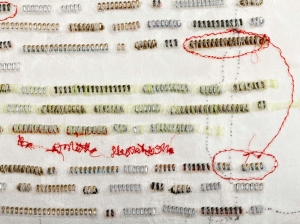 The story of this work begins with the twelve boxes of books that I inherited from my grandfather via my mother. Schlepped from house to house, Brooklyn to Long Island to Florida to California – a uniquely twentieth century Jewish-American itinerary – these treasured books are my literary and intellectual heritage.
The story of this work begins with the twelve boxes of books that I inherited from my grandfather via my mother. Schlepped from house to house, Brooklyn to Long Island to Florida to California – a uniquely twentieth century Jewish-American itinerary – these treasured books are my literary and intellectual heritage.
At first I thought that I would alter some of the volumes – sets of Dostoevsky, Chekhov, Flaubert, Wilde, Whitman – to give them a new life and to prevent the certain fate that awaits them at the book recycling center or worse, the landfill. I gave myself several months to gather my courage to do this, only to realize that I was incapable of making the first cut.
Instead I began to make faux pages and page spreads using the trimmed-down zippers that I had snagged at a fabric give-away months before. The first pieces were generic book pages, small, even, single-column blocks, made of just zippers and thread, with no reference to specific texts. After several months, the work entered the realm of specificity when I decided to work from particular books and to incorporate fabric as a substrate.
I began with four different text sources: the aforementioned boxes of my grandfather’s books (Oscar Wilde and Walt Whitman); dictionaries (because I love the way they look, their illustrations, obscure and archaic words and the fact of their sad and inevitable demise in the digital age); Jewish history (my divergence from all-or-nothing stance towards Israel); and democracy (recent Supreme Court decisions involving the unlimited use of money and disenfranchisement to determine election outcomes).
While in the past I have used readable text, in this work I have substituted text for fragments of stripped-down zippers, with their attendant metaphors of concealment, closure, and impenetrability. The zippers themselves are often not “read” as such, as they are bundled by thread. It is only by reading the titles and source texts that the viewer has an inkling of the content.
HOW THE WEST WAS SEWN
http://lisakokin.com/how-the-west-was-sewn.html
In 2008 I found boxes of pulp cowboy novels at the local recycling center. Although I wasn’t drawn to the imagery, the sheer quantity of the books was enough to entice me to take them back to the studio. After awhile I started to like the imagery, in a campy sort of way. The machismo and violence were so overt and over the top that they begged to be rearranged and recontextualized. And so it happened, just at the end of the Bush Administration, when the cowboy mentality was, I hoped, soon to be left in the dust. How wrong I was and so I continue to use the cowboy novels to comment on guns and the violence that is prevalent in our culture.
Some of the pieces incorporate the covers and spines of the books made into horticultural forms, organic and life-affirming. I have begun to collect pods on my daily walks; their elegant, dessicated forms appeal to me, as does the fact that new growth in the form of a seed contained inside will often forcibly pop out of the pod.



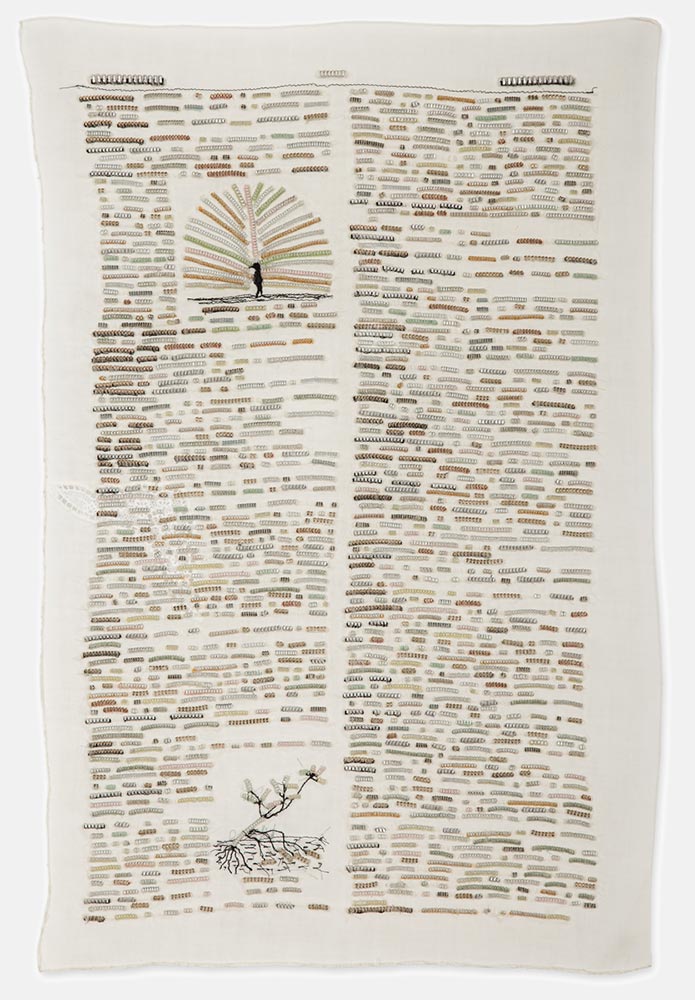
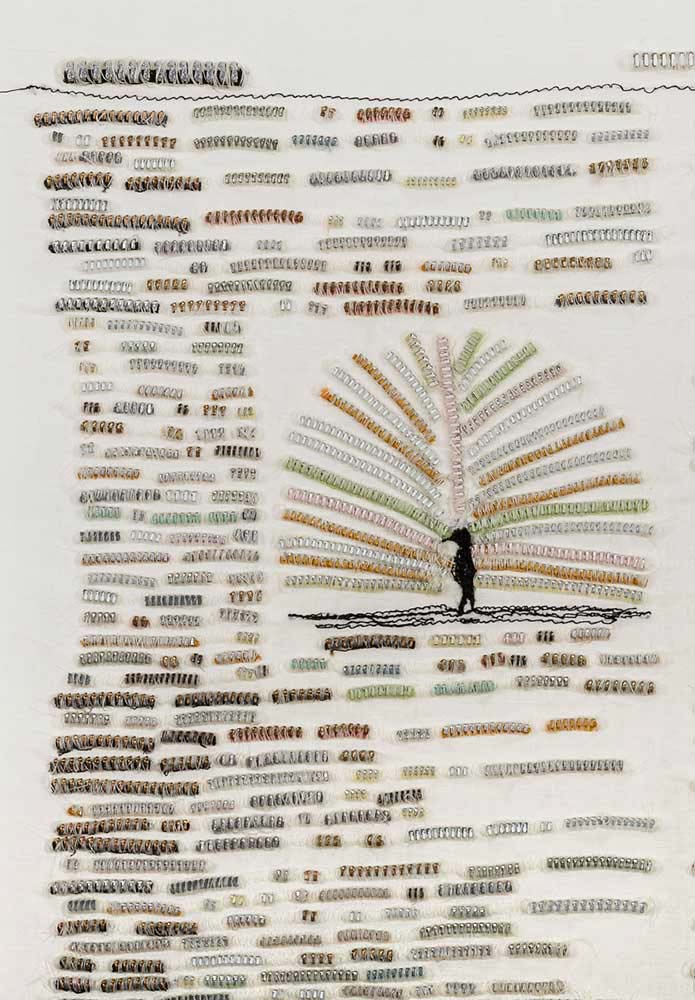
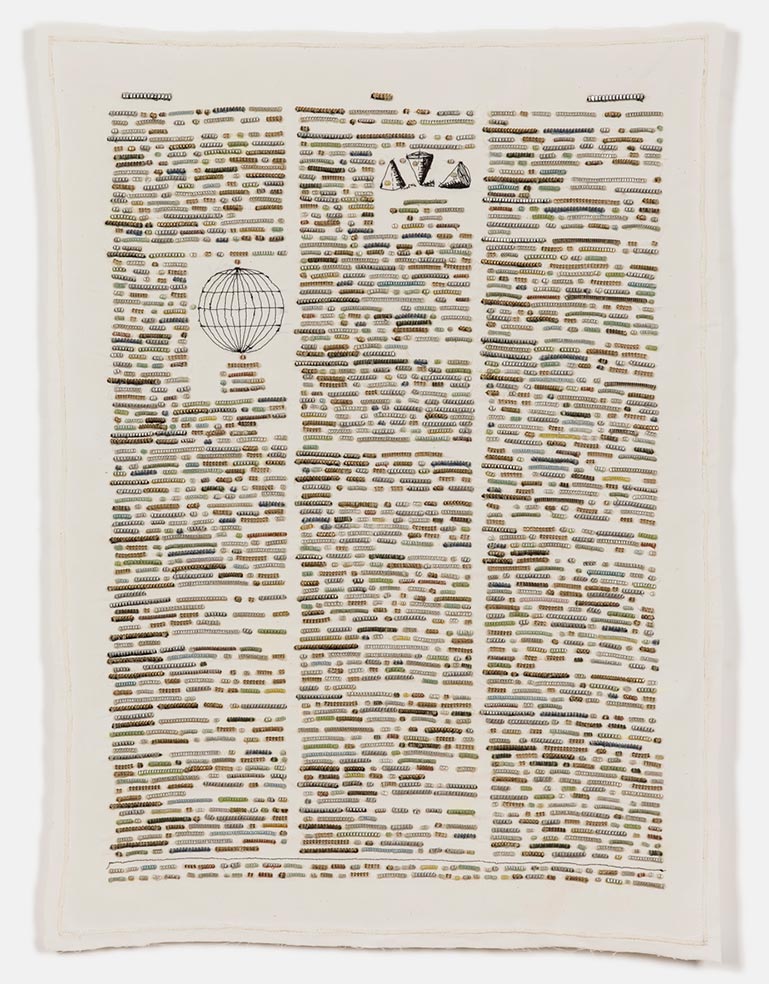
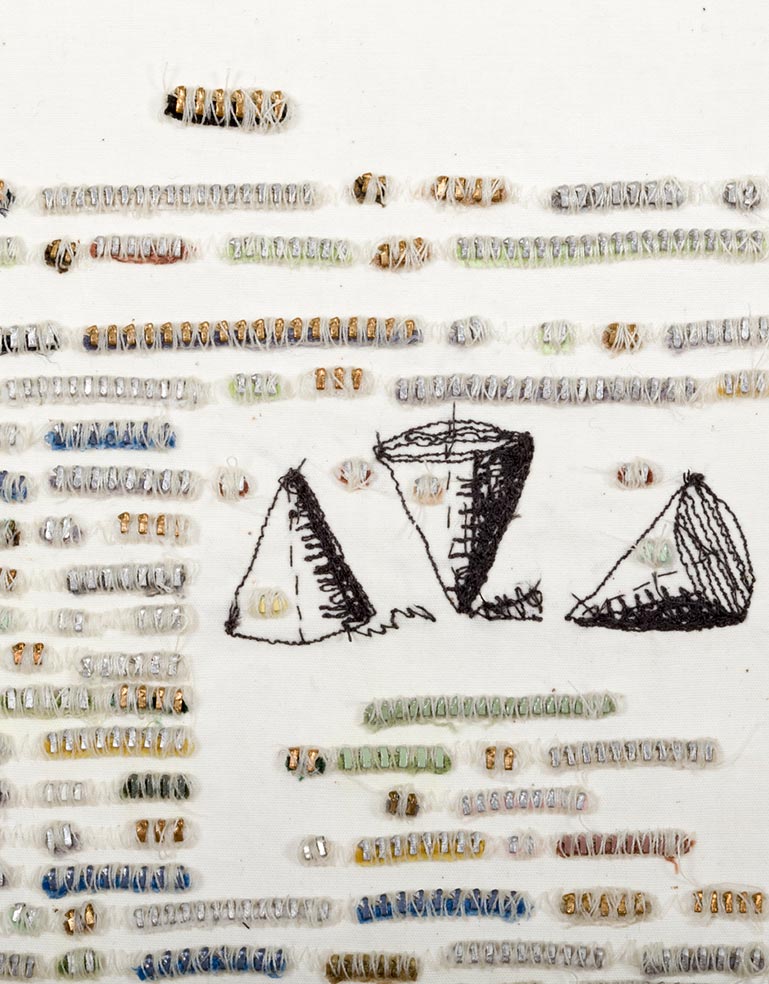
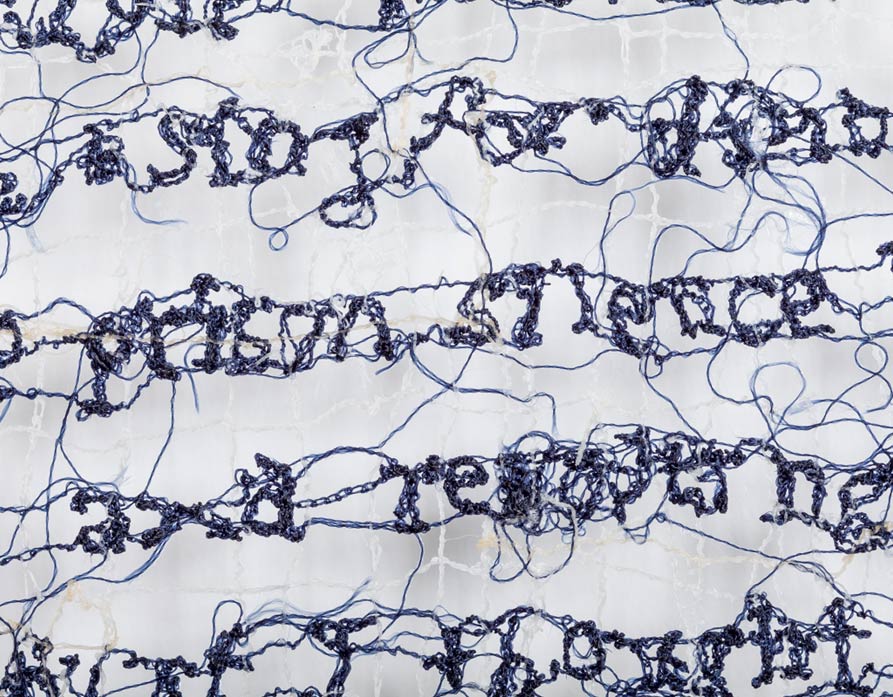
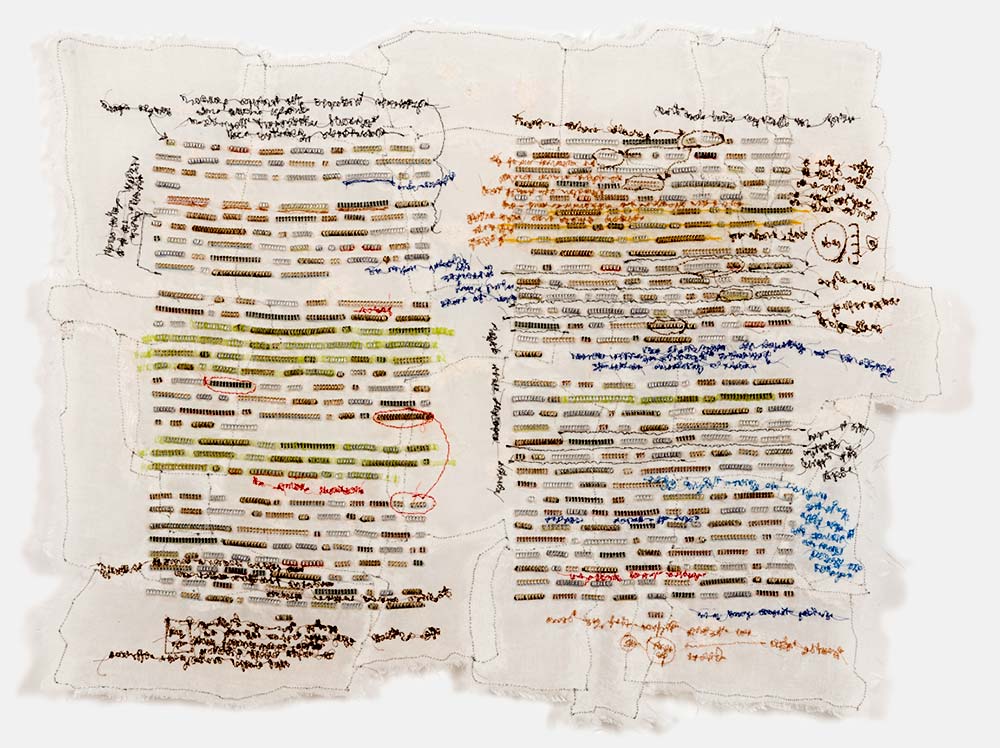
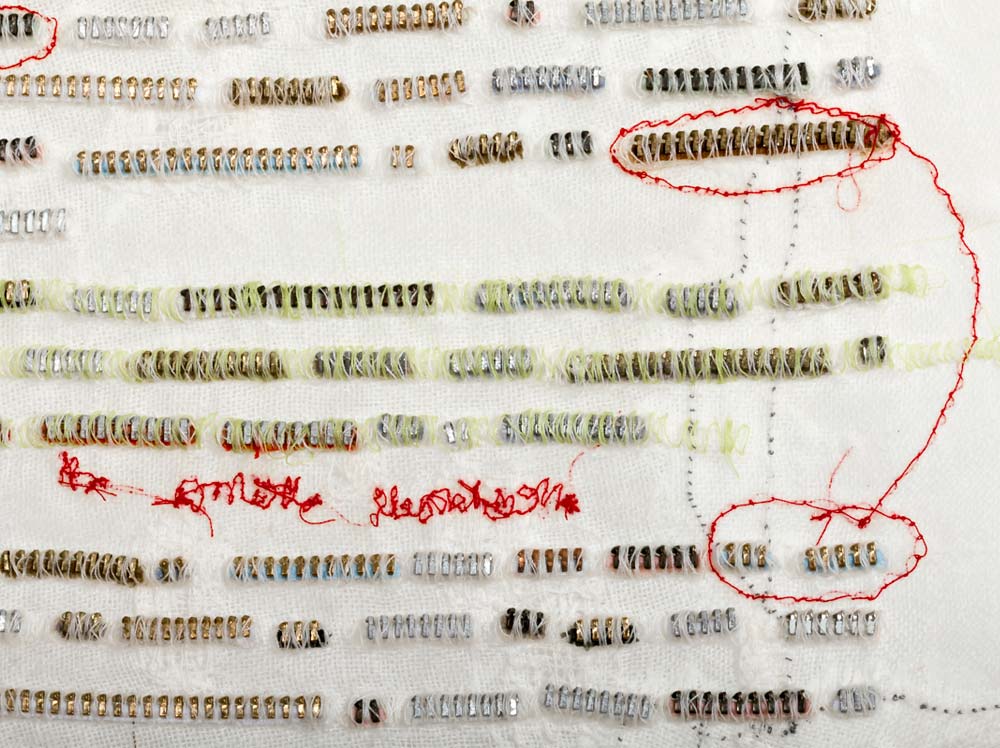
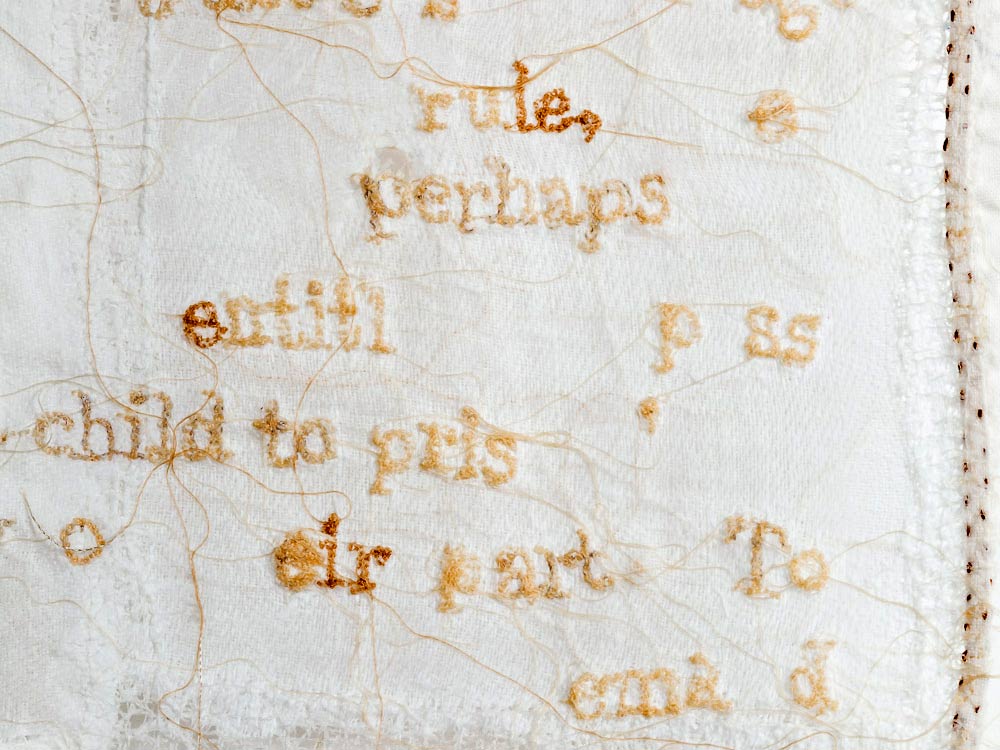
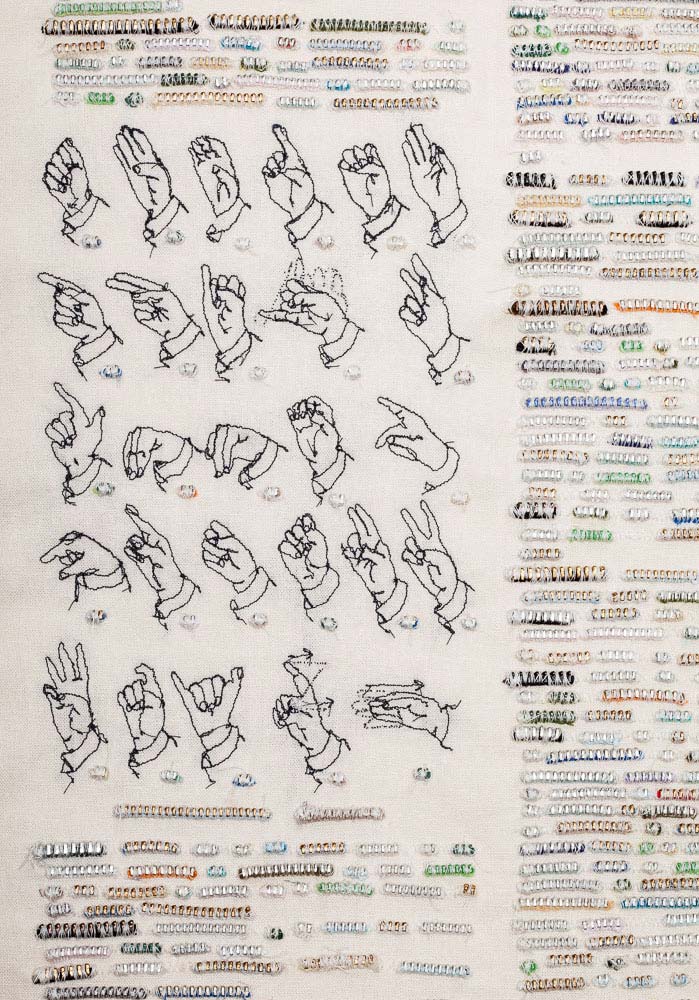

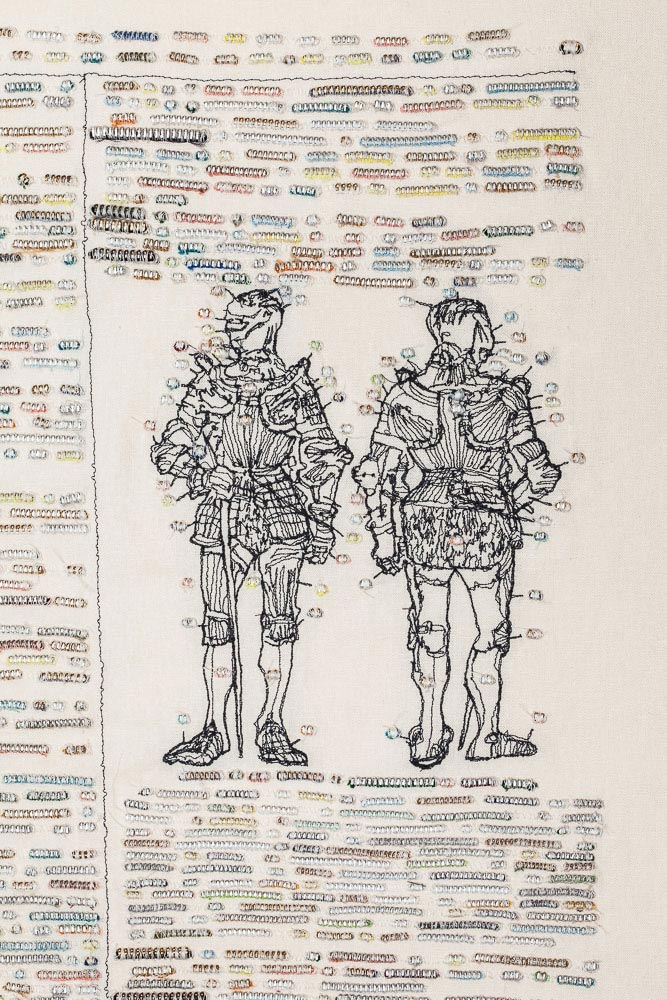
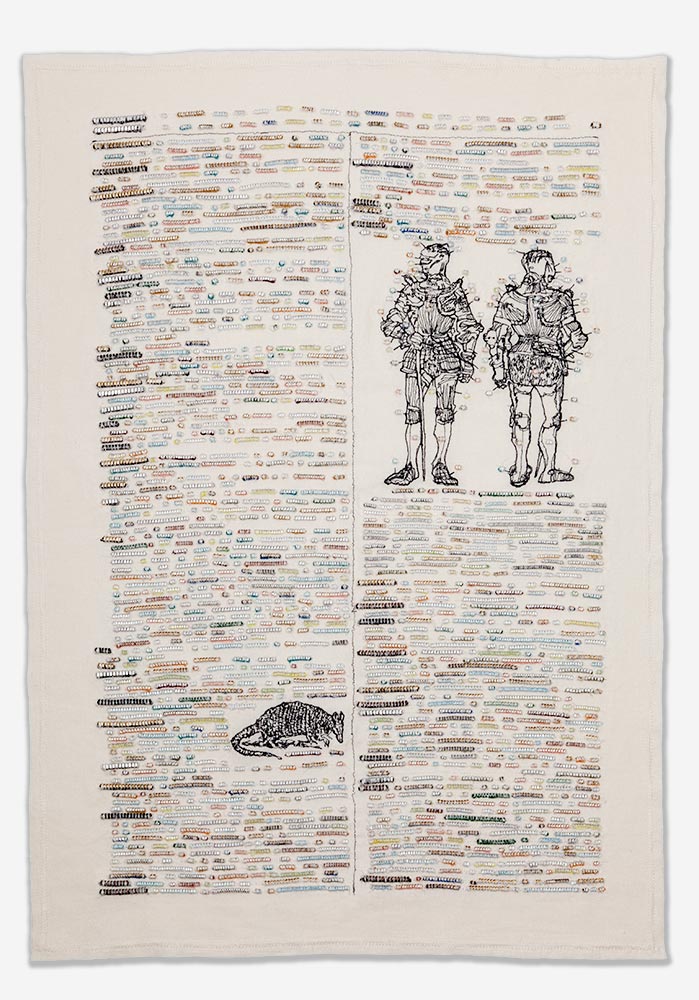
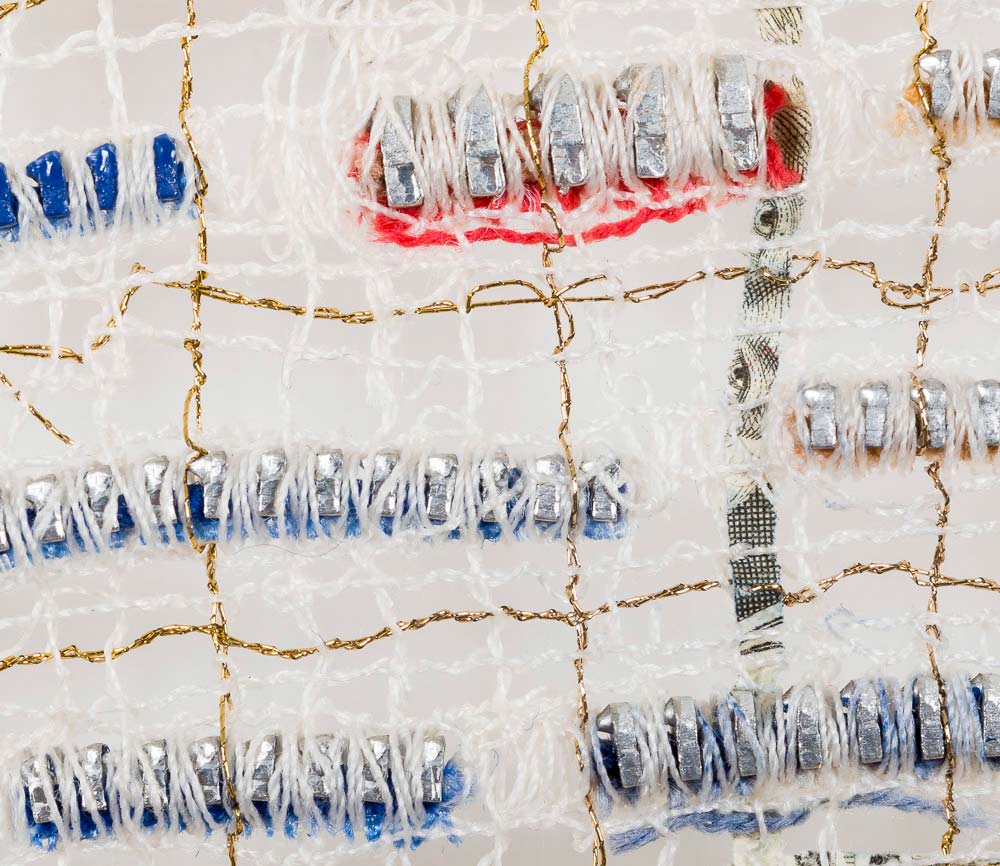
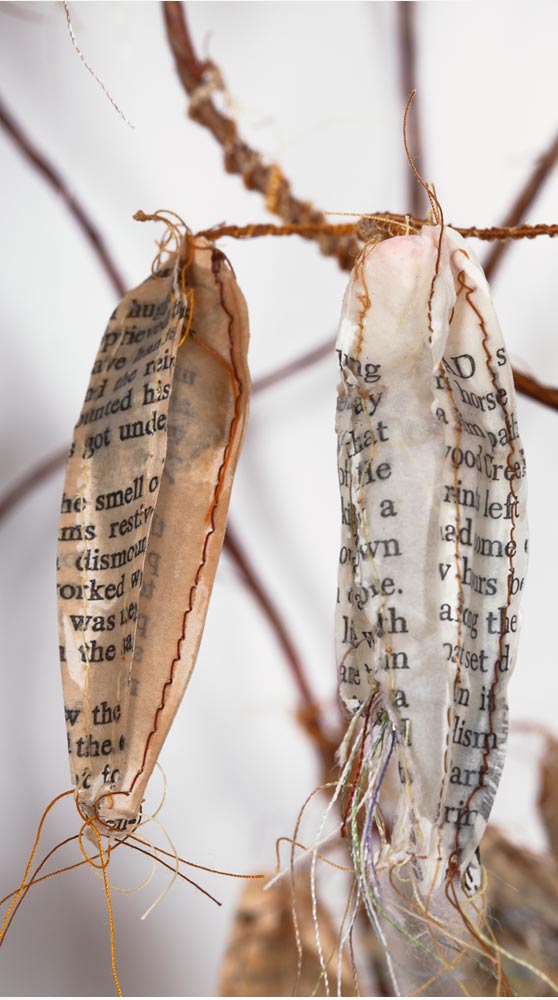
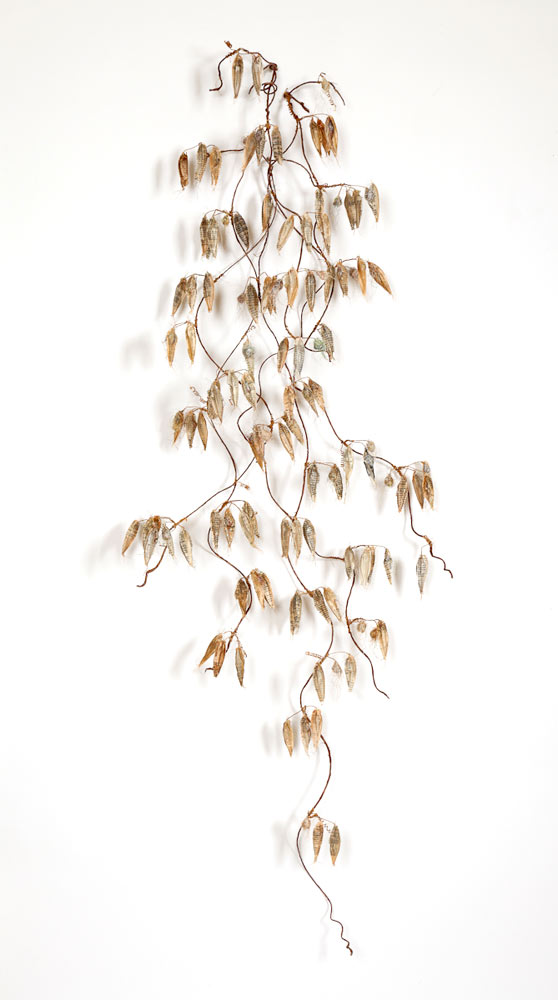
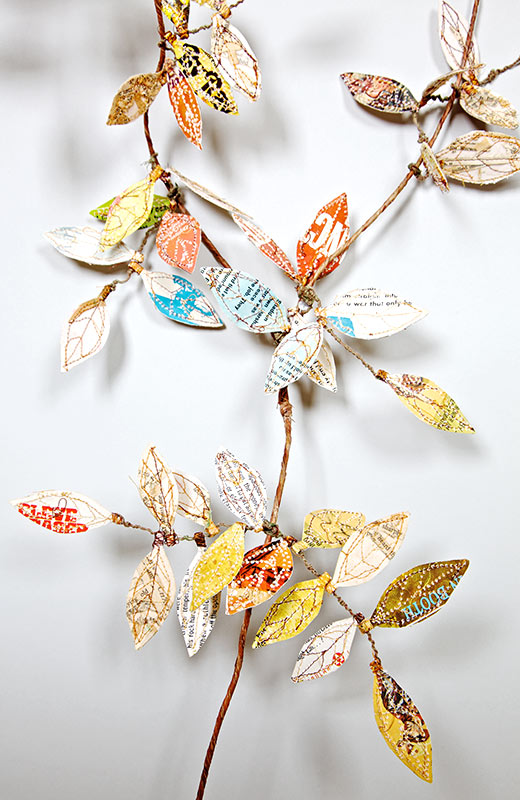
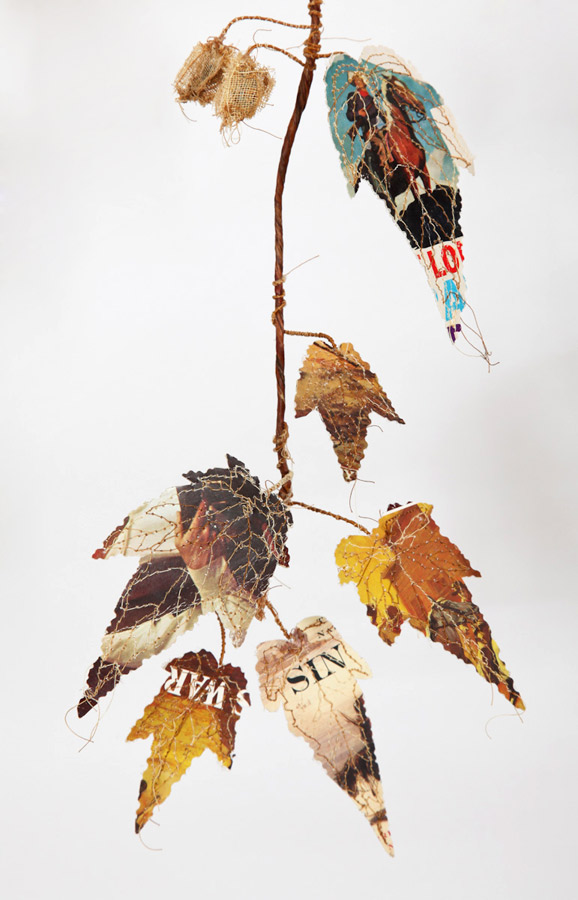
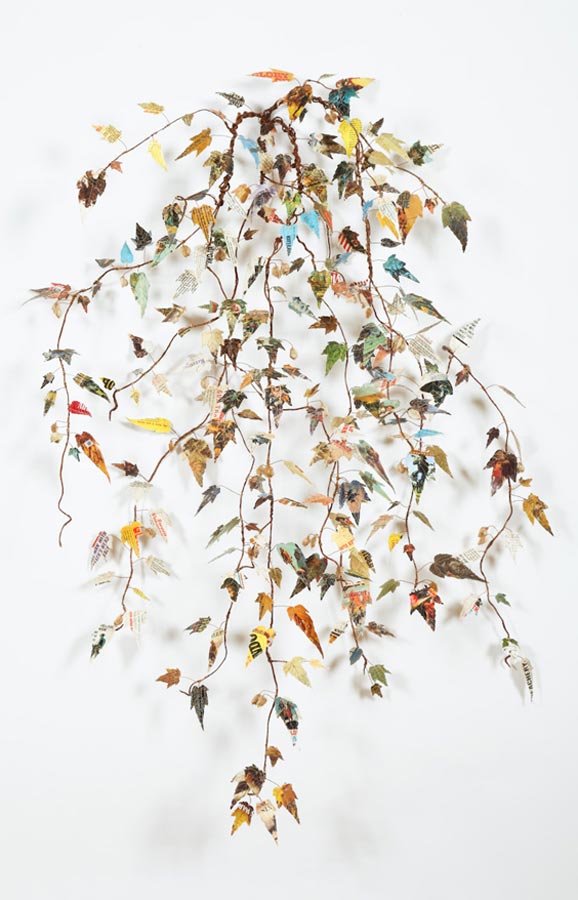
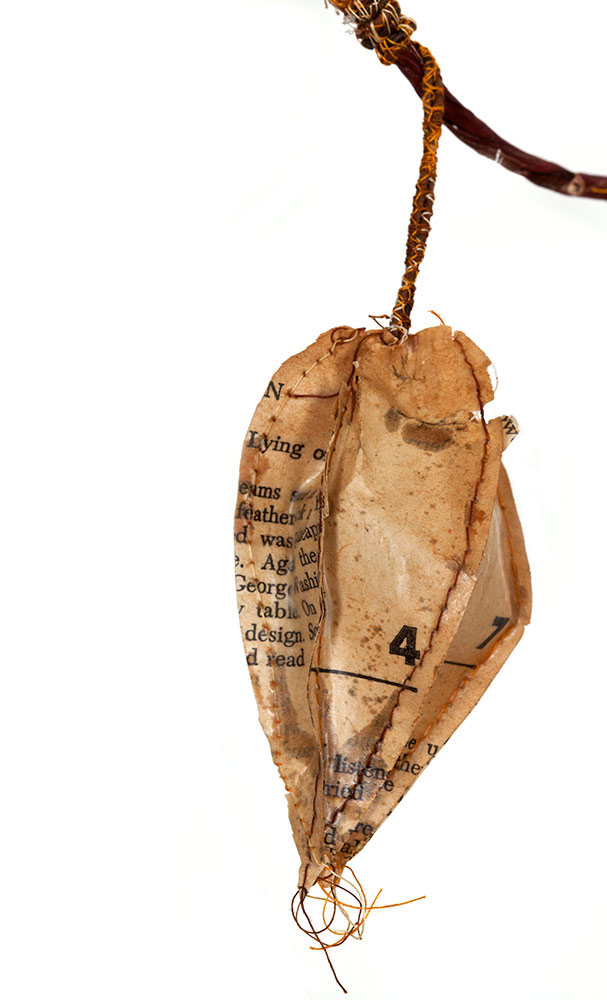
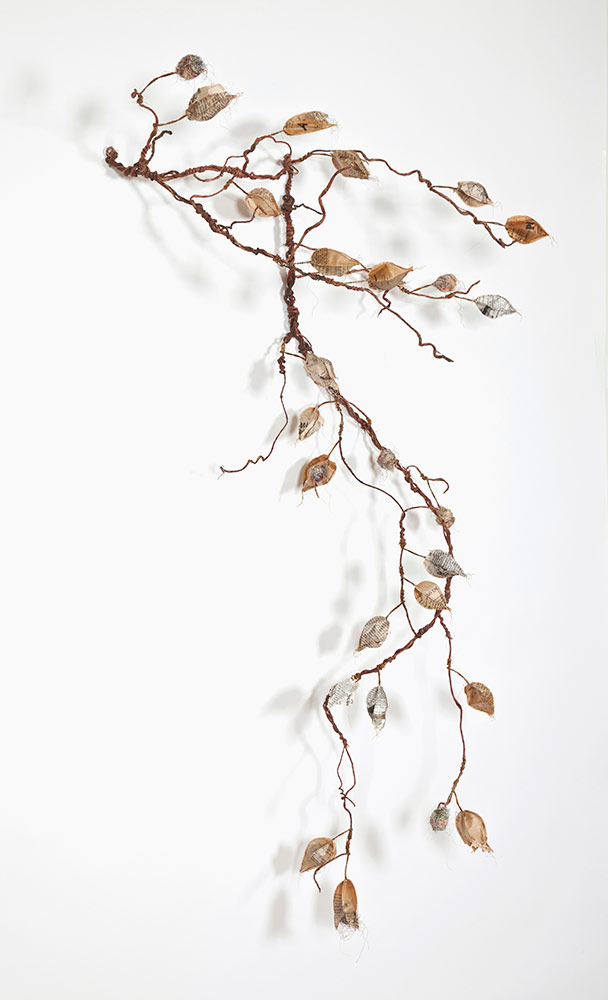
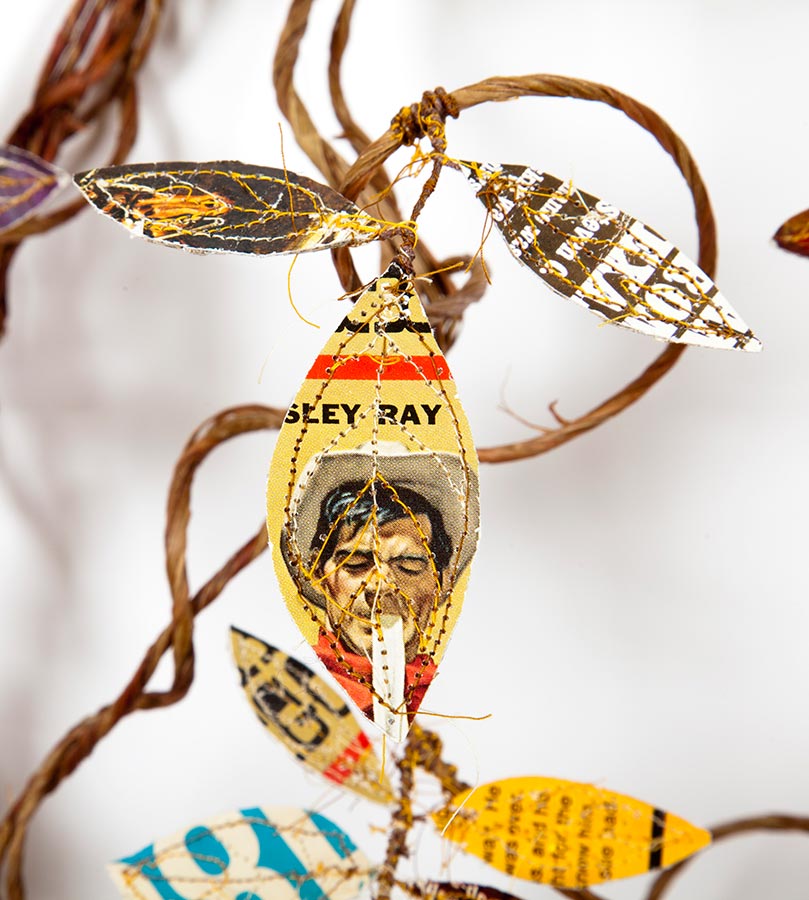

Over the top wonderful!
Visually gorgeous! Thank you Thomas, the work is stunning!
The commitment, detail and intelligence is amazing. Brava Lisa!